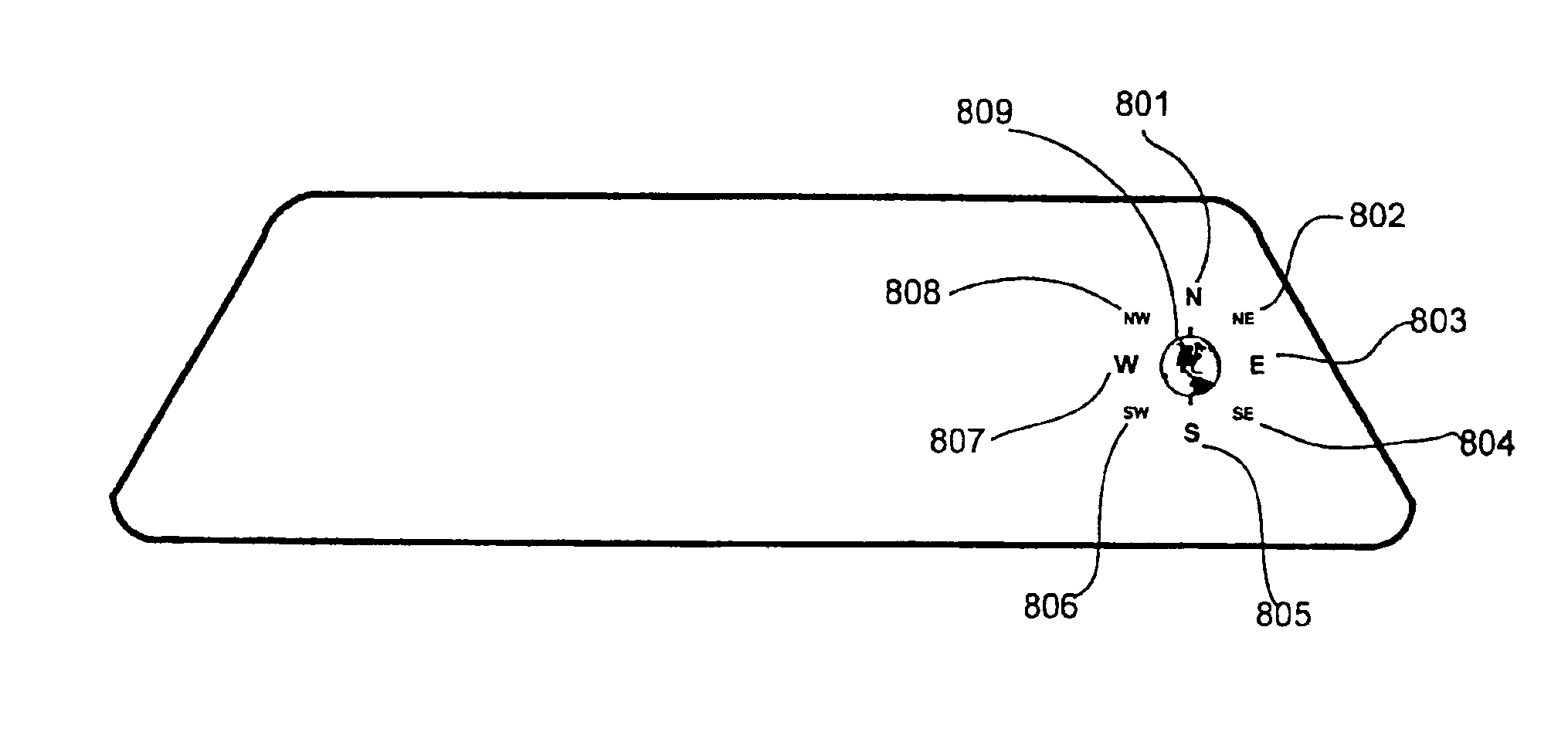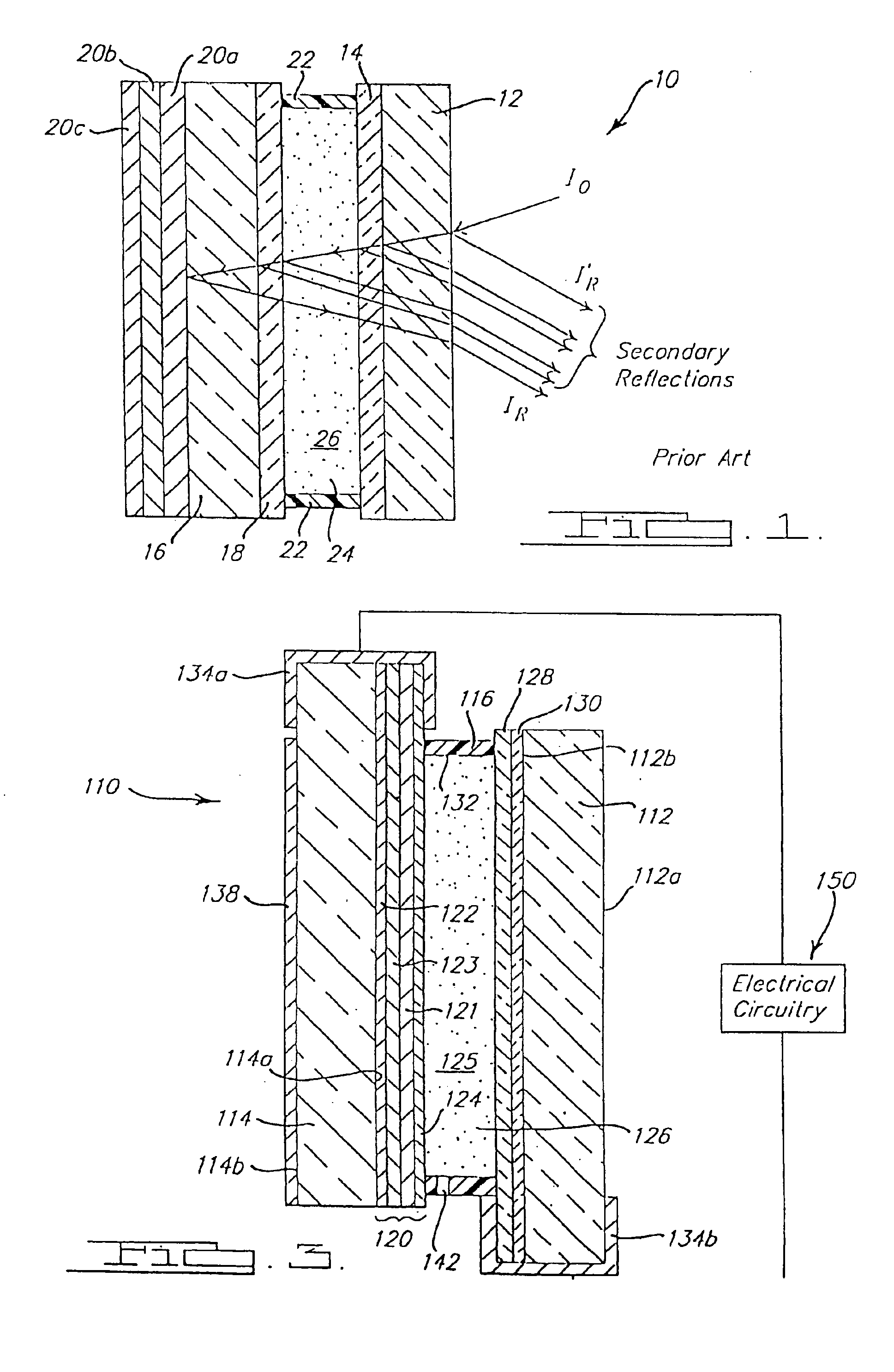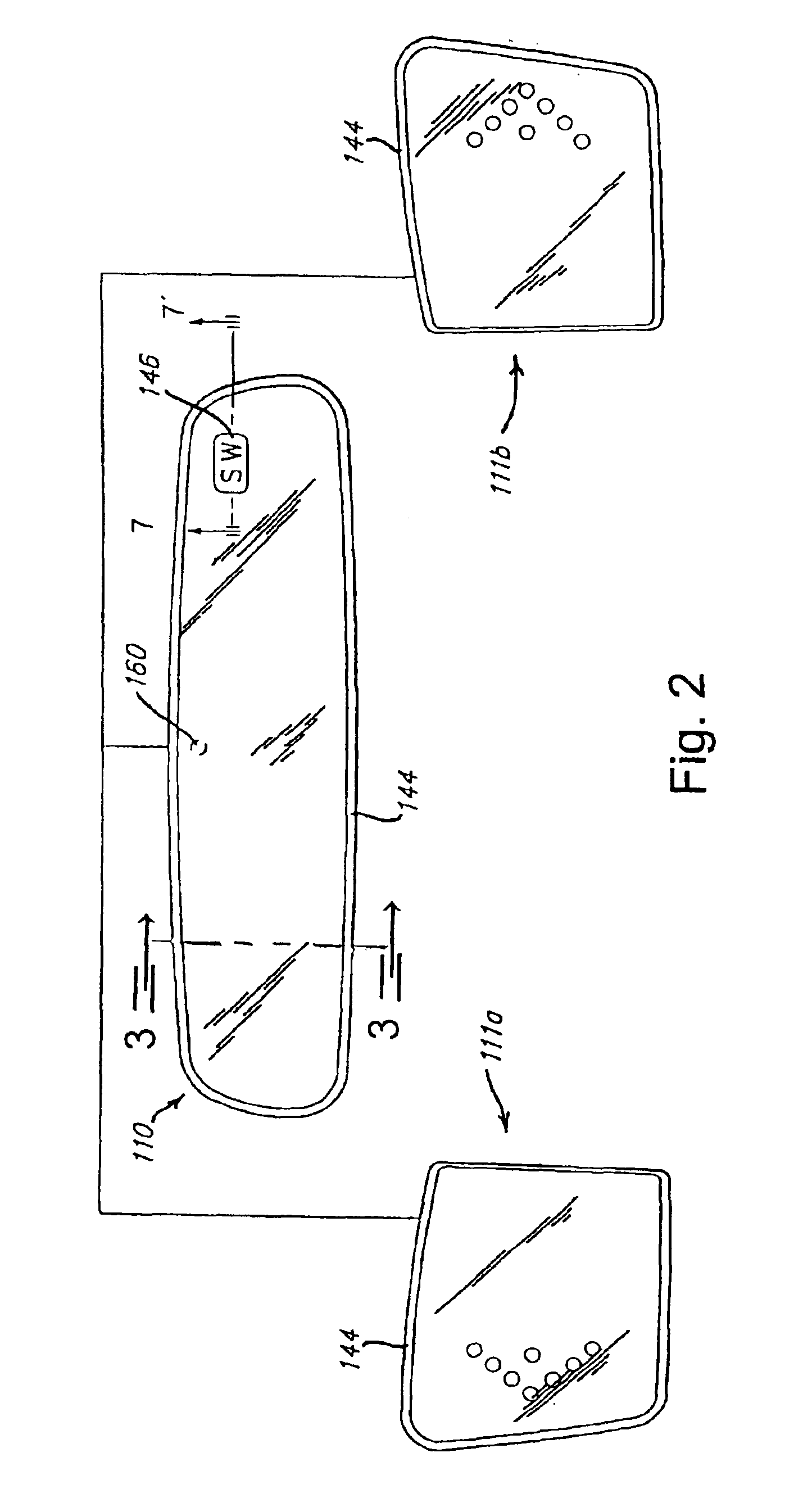Electrochromic rearview mirror incorporating a third surface partially transmissive reflector
a technology of partially transmissive reflector and rearview mirror, which is applied in the direction of electric devices, instruments, transportation and packaging, etc., can solve the problems of not having sufficient reflectivity, not having stable, and no group had commercial success
- Summary
- Abstract
- Description
- Claims
- Application Information
AI Technical Summary
Benefits of technology
Problems solved by technology
Method used
Image
Examples
example 1
[0119]Electrochromic mirror devices incorporating a high reflectivity third surface reflector / electrode were prepared by sequentially depositing approximately 700 Å of chromium and approximately 500 Å of silver on the surface of 2.3-mm thick sheets of flat soda lime float glass cut to an automotive mirror element shape. A second set of high reflectivity third surface reflector / electrodes were also prepared by sequentially depositing 700 Å of chromium and approximately 500 Å of a silver alloy containing 3 percent by weight palladium on the glass element shapes. The deposition was accomplished by passing the said glass element shapes past separate metal targets in a magnetron sputtering system with a base pressure of 3×10−6 torr and an argon pressure of 3×10−3 torr.
[0120]The chromium / silver and chromium / silver 3 percent palladium alloy coated glass automotive mirror shapes were used as the rear planar elements of an electrochromic mirror device. The front element was a sheet of TEC 15...
example 2
[0127]Other than as specifically mentioned, the devices in this example were constructed in accordance with the conditions and teachings in Example 1. Multilayer combination reflector / electrodes were prepared by sequentially depositing approximately 700 Å chromium, approximately 100 Å rhodium, and approximately 500 Å of silver on the surface of the glass element shapes. A second set of multilayer combination reflector / electrodes were also prepared by sequentially depositing approximately 700 Å of chromium, approximately 100 Å rhodium, and approximately 500 Å of a silver alloy containing 3 percent by weight palladium on the surface of said glass element shapes. The electrochromic devices were constructed and tested in accordance with Example 1.
[0128]The device incorporating the sequential multilayer combination reflector electrode of chromium, rhodium, and silver withstood steam autoclave testing two times longer and CASS testing 10 times longer than the device in Example 1 before fa...
example 3
[0129]Other than as specifically mentioned, the devices in this example were constructed in accordance with the conditions and teachings in Example 1. Multilayer combination reflector / electrodes were prepared by sequentially depositing approximately 700 Å chromium, approximately 500 Å molybdenum and approximately 500 Å of a silver alloy containing 3 percent by weight palladium on the surface of said glass element shapes. The electrochromic devices were constructed and tested in accordance with Example 1.
[0130]The device incorporating the sequential multilayer combination reflector electrode of chromium, molybdenum, and silver 3 percent palladium alloy withstood CASS testing 10 times longer than devices in Example 1 before failure occurred.
PUM
| Property | Measurement | Unit |
|---|---|---|
| reflectivity | aaaaa | aaaaa |
| reflectivity | aaaaa | aaaaa |
| transmittance | aaaaa | aaaaa |
Abstract
Description
Claims
Application Information
 Login to View More
Login to View More - R&D
- Intellectual Property
- Life Sciences
- Materials
- Tech Scout
- Unparalleled Data Quality
- Higher Quality Content
- 60% Fewer Hallucinations
Browse by: Latest US Patents, China's latest patents, Technical Efficacy Thesaurus, Application Domain, Technology Topic, Popular Technical Reports.
© 2025 PatSnap. All rights reserved.Legal|Privacy policy|Modern Slavery Act Transparency Statement|Sitemap|About US| Contact US: help@patsnap.com



